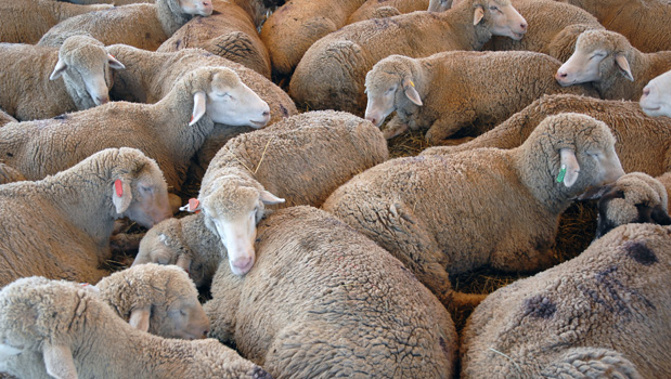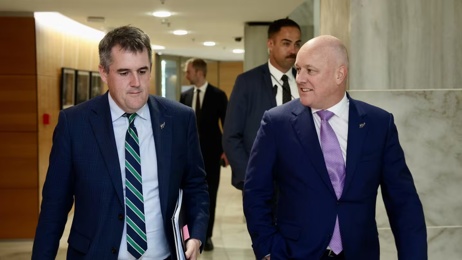
Individual farmers would be responsible for paying the price of their greenhouse gas emissions when emissions pricing is rolled out from 2025 if the recommendations from a sector working group are accepted by the Government.
However, there are concerns that computers system used to calculate emissions liabilities might not be ready by that date.
Individual farmers would be responsible for calculating their own emissions and paying a levy on those emissions. The calculations would be based on a "split-gas" model, which would take into account the differing heating impacts of long and short-lived gases, like methane and carbon dioxide. Farmers would also give an "incentive discount" for actions farmers take to reduce emissions.
Farmers would also be able to factor in the efforts at carbon sequestration they make, like planting trees on their properties.
After calculating their emissions and sequestration, farmers would then pay the net cost of those emissions through a levy. This would begin in 2025, although farms would have to calculate and report emissions in 2024. There are still questions over what that levy would be and the extent to which it represents the true environmental cost of those emissions.
The group modelled the impacts of the charges on farm profitability, finding the average impact to a farm's profitability would be zero to 7.2 per cent. The group reckoned the scheme would reduce long-lived gas emissions by 4-5.5 per cent by 2030 and short-lived gas emissions by 2.9-3.2 per cent by 2030.
The recommendations come from He Waka Eke Noa, the partnership set up between the Government and agriculture sector groups like DairyNZ and Federated Farmers.
The partnership was set up to create a form of emissions pricing both the Government and the agriculture sector would be happy with. Agriculture has been left out of the Emissions Trading Scheme despite accounting for nearly half of New Zealand's greenhouse gas emissions.
If a form of suitable emissions pricing is not agreed, agriculture will enter the ETS in 2025.
Tensions over emissions pricing have existed between the Government and the sector since the 2000s. Even now, the breakaway agricultural group Groundswell has been fiercely critical of sector groups' co-operation in the He Waka Eke Noa process.
The Government is likely to make a decision on whether to accept the recommendations by the end of the year. The Climate Change Commission will also give its view on whether the scheme will do enough.
The price of farm emissions is also likely to face a form of discount so farmers would not pay the full cost of their emissions - many trade-exposed businesses do not pay their full emissions cost and instead pay a discounted cost to ensure they remain internationally competitive.
In Labour's first term, it agreed with NZ First that this would be a 95 per cent discount, meaning farmers would only pay 5 per cent of their emissions cost. This has been rejected for long-term gases in favour of a bespoke price.
He Waka Eke Noa has recommended setting a unique emissions price for both methane and long-lived gases like carbon dioxide.
The Climate Change Commission is not due to make a decision until December.
There are some fish hooks. Calculations will use a "centralised calculator" but there are fears that the Government might not be able to build an IT system that can manage individual calculations for over 20,000 farms.
However, He Waka Eke Noa said that already "over 60 per cent of farms know their on-farm emissions numbers" and the sector will be ready by 2025.
The system will be phased in.
Initially, a "simplified sequestration" calculation will work out sequestration numbers.
Other sequestration efforts that fall out of this calculation will be backdated once "full sequestration measurement and recognition is in place from 2027".
He Waka Eke Noa said farmers consulted for the project expressed a "strong preference for a farm-level pricing system to give farmers control and autonomy over their farm business and emissions profile and recognition for their actions on-farm".
Pricing emissions at the processor level had been discussed as one form of emissions pricing, although pricing at the farm level has been preferred since the Interim Climate Change Committee looked at the issue in 2019.
There had been the suggestion that a transitional model would be used while computer systems were readied for farm-level pricing.
He Waka Eke Noa said that going straight into farm-level pricing "will be challenging to achieve but is preferable to switching systems after a few years".
Farmers consulted also supported the split-gas model.
"Farmers supported split-gas pricing, the investment of revenue into research and development and the recognition of sequestration from on-farm vegetation, especially types not recognised in the NZ ETS," the partnership said.
The report warned some farmers might exit the business.
He Waka Eke Noa believed its recommendations would see "deer, sheep and beef operations... face a greater impact on their bottom line than dairy operations under the same levy rates".
The report noted that for sheep and beef farming, the largest emissions reductions were still coming from existing policies, mainly the conversion of agricultural land into forestry, driven by a high ETS price.
Research from Beef + Lamb presented in the report warmed that "at the extreme" this could see a "significant number of farms exiting meat production".
The report also warned that some farms could reduce production, which would see "emissions leakage" as other countries with more emissions intensive farmers ramped up production to fill the deficit left by New Zealand farms.
"Current modelling estimates that a farm-level split-gas levy will result in a fall in production of milk of 1.4 per cent and meat of 0.1 per cent," the report said.
Take your Radio, Podcasts and Music with you









